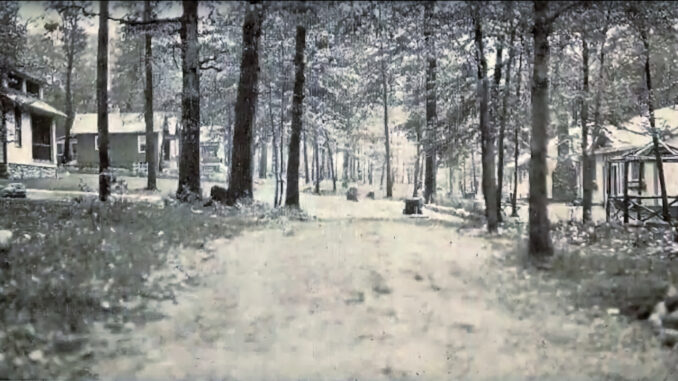
MONTVALE—Powhatan Park was a colony of summer homes developed in Montvale in the 1910s. Today its grounds would include Waverly, Forest, and Westmoreland avenues, off the north side of East Grand Avenue.
Real estate developer Daniel H. Atkins had been born in the mountains of Virginia and came to New York City in the early 1900s. Dissatisfied with life there, he moved his family out to northern Bergen County, which in those days was rural and largely undeveloped. They settled in Montvale and devised a new real estate venture, a development he would call Powhatan Park.
Naming his development after a Native American group was intended to call to mind a pristine and untouched natural landscape—although up here it was the Lenape who once roamed these forests, not the Powhatan, who were down in Virginia.
A 1926 advertisement explains, “Choosing a wooded ridge with an extended view in three directions, he laid out Powhatan Park with the view of leaving untouched as far as possible nature’s artistry and avoided the substitution of man’s crude imitations. Roads in graceful curves swung around fine clumps of oaks and left the general appearance of the property with its trees, rocks, and ferns, approaching the conditions in which the Indians left it.”
Powhatan Park was heavily advertised as summer homes for people living in New York City. Where today Montvale is the quintessential suburban town, over a century ago it was sparsely populated—just 522 people in 1910—and something of a summer resort, complete with boarding houses. The railroad brought in people from the city for vacations in the countryside.
Advertisements described the area as “the healthiest region east of the Rocky Mountains,” a veritable utopia of pure water, perfect drainage, fine schools, the best neighbors, and a mosquito-free (and malaria-free!) existence.
In 1915, one could purchase a 100-by-175-foot building lot in the colony for $450, or a plot with a house already built for $1,800 (about $54,000 in today’s money). A supply of rubble stone was provided for free to those building houses. It proved to be a good investment for those who bought in early: by 1925 the cost of the smallest home in Powhatan Park had risen to $6,500.
The classic Powhatan Park look was a craftsman-style house with fieldstone accents. Many such homes can still be found in that neighborhood today.
— Kristin Beuscher is president of the Pascack Historical Society
